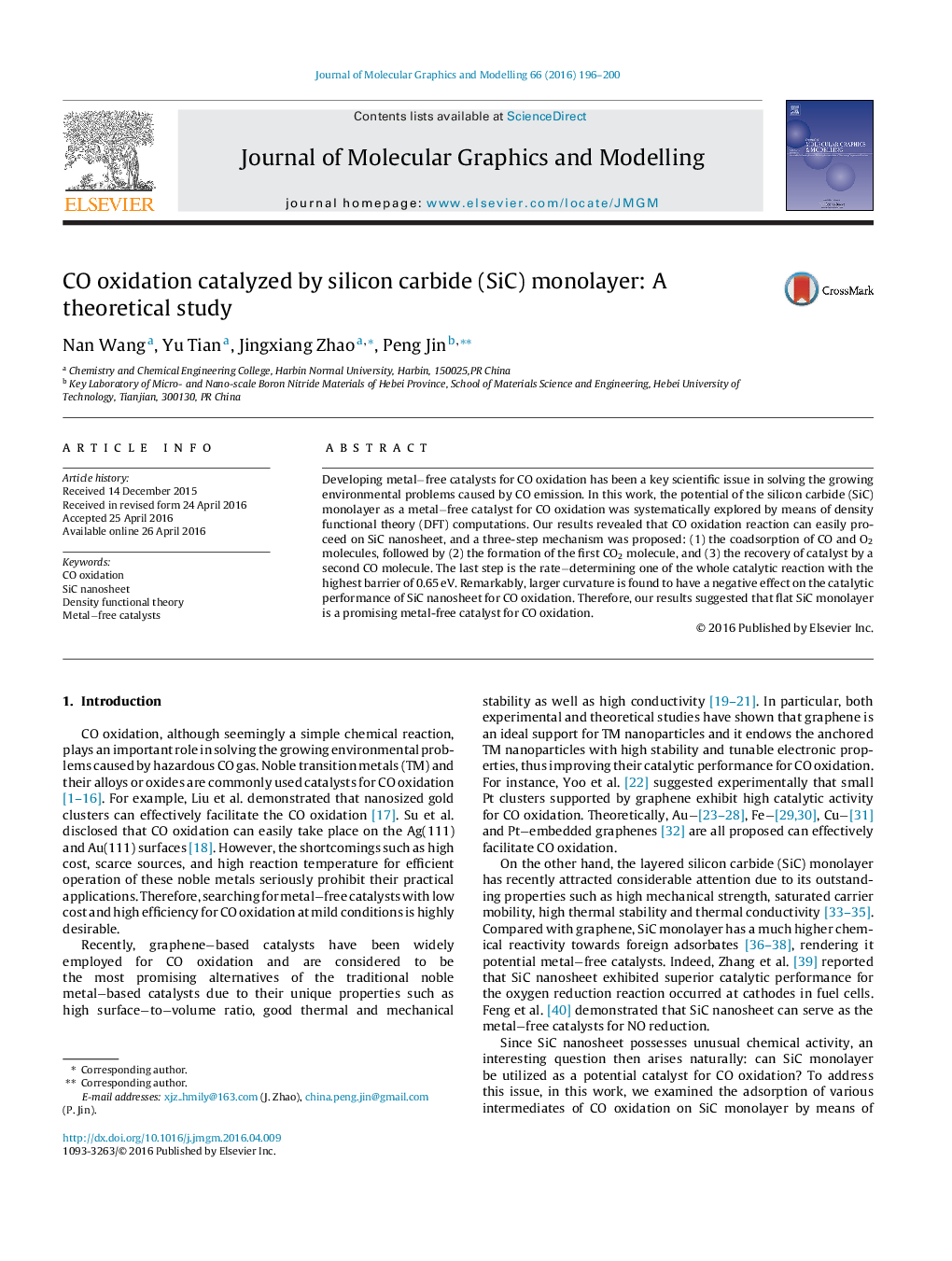| Article ID | Journal | Published Year | Pages | File Type |
|---|---|---|---|---|
| 443275 | Journal of Molecular Graphics and Modelling | 2016 | 5 Pages |
•The potential of SiC monolayer as a CO oxidation catalyst was explored.•CO oxidation can occur via a three-step mechanism.•The curvature has a negative effect on the catalytic performance of SiC nanosheet.
Developing metal−free catalysts for CO oxidation has been a key scientific issue in solving the growing environmental problems caused by CO emission. In this work, the potential of the silicon carbide (SiC) monolayer as a metal−free catalyst for CO oxidation was systematically explored by means of density functional theory (DFT) computations. Our results revealed that CO oxidation reaction can easily proceed on SiC nanosheet, and a three-step mechanism was proposed: (1) the coadsorption of CO and O2 molecules, followed by (2) the formation of the first CO2 molecule, and (3) the recovery of catalyst by a second CO molecule. The last step is the rate−determining one of the whole catalytic reaction with the highest barrier of 0.65 eV. Remarkably, larger curvature is found to have a negative effect on the catalytic performance of SiC nanosheet for CO oxidation. Therefore, our results suggested that flat SiC monolayer is a promising metal-free catalyst for CO oxidation.
Graphical abstractFigure optionsDownload full-size imageDownload high-quality image (169 K)Download as PowerPoint slide
